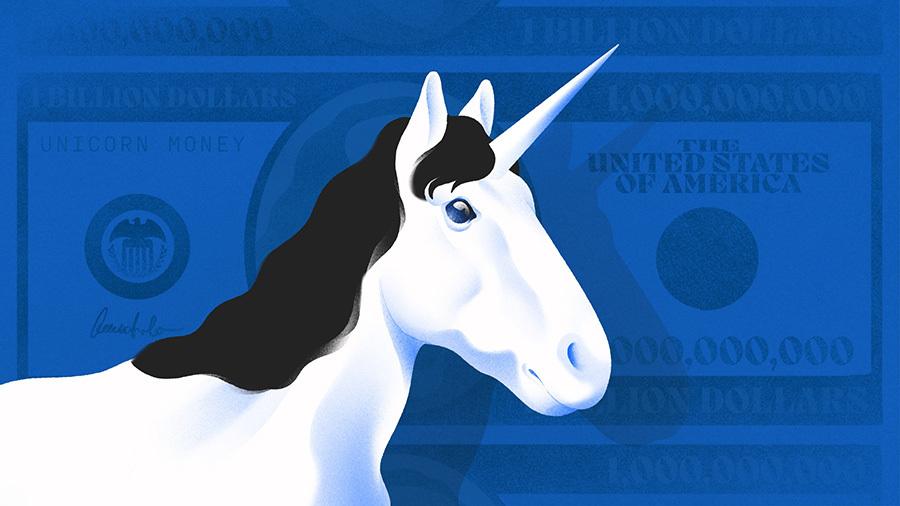All Stories

The MVPs Of The Startup World Are Still Getting More Valuable
At $500 billion, OpenAI’s latest valuation is higher than the individual GDPs of more than three-fourths of all nations on Earth. We won’t opine on whether the business’s fundamentals merit that pricetag. However, we will note that it’s the most dramatic example of a broader trend: Hot private companies posting huge and often sharply rising valuations. For now, OpenAI has clinched first place as the most valuable private company. But, per Crunchbase data, there are also at least five more private, venture-backed U.S. companies with valuations exceeding $100 billion. Below, we’ve ranked the top five other companies, including a look at how their valuations have risen in recent quarters Private valuations taking cues from public markets Given that many large cap public tech companies have seen large share-price hikes in recent months, particularly for those perceived as leaders in AI, it’s not entirely a shocker to see the most high-profile private companies getting valuation boosts as well. Still, it’s worth noting that these are unusually large gains in the space of a few months, particularly for GenAI leaders. At current levels, they’re certainly priced with high expectations for future performance. Related reading: Illustration: Dom Guzman
A Growing Backlog Of Biotechs Haven’t Raised Funding Since The Boom
As biotech startup funding continues to decline, the backlog of funded, private companies that haven’t raised capital in several years has grown quite large. Per Crunchbase data, more than 200 private U.S. biotechs with $50 million or more in funding to date secured their last reported financing between three and five years ago. The list includes at least 15 biotech unicorns and emerging unicorns that haven’t raised known funding for at least the past three years. From boom to not Part of the reason for the backlog of companies with long funding lags is the shift in investor appetite for biotech. During the boom years from 2020 through 2022, startup investors put an average of $40 billion per year into the space — well above current levels. Some of those were truly huge financings as well. The largest, in early 2022, went to Altos Labs, a San Francisco startup focused on cellular rejuvenation that launched with $3 billion in committed capital. The biotech IPO market was also quite happening then compared to now. This offered companies yet another avenue to raise capital to fund research and clinical trials. This year, by contrast, is on track to come in much lower. So far in 2025, only about $17 billion has gone to U.S. biotechs, per Crunchbase data. And of that, roughly half has gone to seed and early stage startups — leaving a smaller portion for late-stage financings for well-funded companies. High profile companies see funding lag times A number of the companies that have gone three-plus years without a round were fairly high-profile startups as well. Many are still chugging along, likely helped by having secured large commitments when funding flowed more freely. For example Insitro, a startup focused on applying machine learning to drug discovery and development, raised $643 million between 2018 and 2021 but hasn’t raised a known round since. This spring, the company announced a 22% workforce cut in a move it said “extends our runway into 2027.” Agtech unicorn Pivot Bio, which develops microbial nitrogen for farms, also hasn’t secured known financing in more than four years, per Crunchbase data. However, it should be noted that its last round — a $430 million Series D in 2021 — was pretty big. The company has a number of open positions and this spring announced plans to relocate a significant portion of its operations from Berkeley, California, to the Midwest. Ultima Genomics, developer of a low-cost sequencing platform, is another company that had a big round a few years ago and hasn’t raised since. The Newark, California-based startup launched in May 2022 with $300 in initial funding from backers including Andreessen Horowitz and Khosla Ventures. Of late, it’s been steadily announcing new partnerships. Collectively, it’s a huge sum of commitments If we look at all the well-funded biotechs in our query, they’ve collectively raised a tremendous amount of money. In total, the 204 companies in our sample 1 that haven’t raised for three-plus years previously pulled in $17.9 billion. That’s roughly equivalent to all the venture money that’s gone into biotech this year. Will investors eventually see some return on investment for these commitments? Despite having some preternatural disposition toward pessimism, I’d say the outlook is reasonably positive. For one, while the biotech IPO market has been quiet lately, cycles do turn. And when this one does, it looks like there’s a strong pipeline of compelling companies that could pursue listings. An uptick in M&A could also be in the cards. Of course, not all these well-funded companies will prove successful, and some will likely fold in coming quarters and years. But hopefully, some of those that do make it will succeed in a big way. Related Crunchbase lists: Related reading:
OpenAI’s $6.6B Secondary Share Sale Gives It Record $500B Startup Valuation, Topping SpaceX
OpenAI on Thursday completed a secondary share sale amounting to $6.6 billion, Bloomberg reported. The sale gives current and prior employees the ability to sell stock at a $500 billion valuation. The transaction and resulting valuation also grant OpenAI the distinction of now being the world’s most valuable private, venture-backed company, surpassing SpaceX, which was reportedly valued at $400 billion after its own secondary share sale this summer. According to CNBC, OpenAI had authorized up to $10.3 billion in shares for sale, which was up from its original $6 billion target. But only about two-thirds of what it had authorized ultimately got sold. Besides OpenAI and SpaceX, several other high-valued private companies have turned to secondary sales, which are often used to reward employees and as a retaining tool for companies not ready to go public. In February, fintech giant Stripe announced a tender offer in which investors would buy shares from past and present employees at a valuation of $91.5 billion. Last December, Databricks raised $10 billion at a $62 billion valuation in a deal that included a secondary share sale aimed at providing liquidity for current and former employees. In April, OpenAI also made headlines for an investment of up to $40 billion from Japanese investment conglomerate SoftBank in a deal that marked the largest startup financing ever and valued it at $300 billion. Related reading: Illustration: Dom Guzman
Navigating IPOs In 2025: Managing Timing, Risk And Opportunity
By Carl Niedbala In 2024, slightly less than half of planned IPOs were postponed, highlighting significant disruptions in the startup ecosystem due to market volatility and economic uncertainty. Traditionally, IPOs have been pivotal exit strategies for venture-backed companies, enabling them to access liquidity and fuel growth. However, current market conditions have challenged their reliability, forcing many companies to reevaluate their paths to public markets. That’s why I’d like to delve into why companies are facing these challenges, but also how to adapt and explore alternative strategies. Navigating delayed IPOsCarl Niedbala Delayed IPOs significantly impact businesses, investors and employees. Market volatility, economic downturns and geopolitical tensions all create uncertainty, prompting companies to reconsider IPO timing and compressing the IPO window. Valuation challenges also deter IPO launches, as market corrections and heightened investor caution lead to diminished startup valuations. Regulatory scrutiny, with its evolving standards and stringent reporting requirements, adds another layer of complexity. Lastly, investor sentiment, whether bullish or pessimistic, directly influences IPO activity. Stakeholders across the spectrum feel the pinch of delayed IPOs. Late-stage startups face funding shortfalls, while venture capital firms encounter extended timelines for their exits, complicating future fundraising. Employees face consequences as well, as delayed IPOs affect stock option values, which are often central to their compensation packages. Emerging risk profiles: valuation and financial risks Delayed IPOs create a cascade of interconnected risks for startups. One of the primary concerns is valuation risk, where companies unable to meet their target IPO valuations may be forced into accepting down rounds. A down round means new financing occurs at a lower valuation than previous funding rounds, which can severely damage investor confidence. This problem is compounded by a lack of liquidity; with IPOs delayed, investors face prolonged illiquidity, limiting their ability to capitalize on investment gains. This reduced liquidity strains investor patience and can pressure venture capitalists to seek alternative exit strategies, sometimes leading to hastened decisions. Unfortunately, illiquidity also leads to significant financial risks. Startups reliant on IPO proceeds often face funding shortfalls and increasingly turn to debt financing. While this approach can temporarily ease cash flow pressures, it heightens financial vulnerability by increasing leverage and interest obligations, which may limit a company’s financial flexibility in the long term. Moreover, these conditions can expose weaknesses in startups with unsustainable business models. Companies heavily dependent on continuous external funding may find their operational weaknesses starkly exposed when the IPO route is closed, risking insolvency or forced mergers and acquisitions at unfavorable terms without rapid adjustments. IPO alternatives and risk management solutions In this challenging environment, despite several companies kicking off roadshows, alternative exit strategies are becoming essential for startups. Mergers and acquisitions have gained prominence, with companies strategically aligning with larger entities to benefit from synergies, immediate financial returns and reduced market uncertainty. Beyond M&A, other options have also emerged as viable paths to liquidity. For example, a direct listing allows a company to go public without issuing new shares, providing liquidity to existing shareholders without the typical IPO fanfare. Private equity buyouts also offer an IPO alternative by allowing a private equity firm to acquire a controlling stake in the company, providing an immediate exit for founders and investors. Robust risk management solutions are also critical. Startups can proactively manage cash flow and anticipate funding shortfalls through accurate financial planning and forecasting. Streamlining operations, optimizing resource allocation and controlling costs can strengthen financial resilience, while detailed contingency plans ensure agility. Additionally, comprehensive insurance solutions, such as directors and officers and errors and omissions coverage, protect startups and their leadership from financial and legal liabilities, maintaining stakeholder confidence amid uncertainty. Best practices to avoid legal pitfalls Directors and officers have fiduciary duties, which legally oblige them to prioritize the best interests of the company and its shareholders, ensuring responsible decision-making. Simply put, accuracy and transparency are crucial. Regulatory compliance must be a priority. Failure to adhere to these regulations can result in significant legal and financial repercussions, undermining investor confidence and potentially jeopardizing the company’s future viability. Companies should prioritize long-term sustainability and value creation, resisting pressures for short-term gains. By adopting these best practices, businesses foster investor confidence, de-risk the IPO journey, and ultimately position themselves for sustained success. Carl Niedbala is the COO and co-founder of Founder Shield. Previously, he spent the first years of his career in roles across the venture ecosystem. From venture due diligence at Originate Ventures to growth hacking and modeling for portfolio companies at Dreamit Ventures to M&A negotiations at Pepper Hamilton, he’s seen how companies succeed (and fail) from all angles. Niedbala is energized by the possibility of rethinking the way the insurance industry works through technology, best-in-class customer service, and cutting-edge marketing and branding. In 2021, Founder Shield joined The Baldwin Group, where Niedbala now leads digital product strategy and innovation. Related Crunchbase query: Related reading: Illustration: Dom Guzman
Flood Insurer Neptune Insurance Buoyed Higher In First-Day Trading
Shares of Neptune Insurance Holdings closed up 24% in first-day trading Wednesday, as the market tides delivered a rise for the flood insurance policy provider. The St. Petersburg, Florida-based company priced shares at $20 a piece Tuesday afternoon, the top of the projected range. The offering raised $368 million for Neptune and set an initial valuation around $2.76 billion. The company trades on the New York Stock Exchange under the ticker “NP.” Founded in 2018, Neptune bills itself as an AI-enabled platform for insurers to offer flood coverage to residential and commercial customers. The company underwrites policies but does not handle claims or take balance sheet insurance risk, opting instead to work with other insurance providers. So far, it’s working out profitably, with business growing as well. In the first half of this year, Neptune reported revenue of $71.4 million — up 34% year over year. The company posted net income of $21.6 million, more than doubling from the same period last year. Neptune cites climate change as a driver of future growth in its platform, noting that “areas with low perceived flood risk today (e.g., non-coastal regions) could face increased frequency and intensity of flooding due to additional rainfalls and storms.” Additionally, it foresees the possibility of more areas with severe inland flooding being designated as mandatory flood insurance zones for policyholders with federally-backed mortgages. Today, per Neptune, the largest U.S. provider of flood insurance and the holder of the majority market share is the National Flood Insurance Program, a government-run entity that it cites as its main competitor. Per Neptune, however, “its limited product offerings often fail to meet policyholder needs.” Neptune’s growth to date has been funded in part through private investors.The company lists Bregal Sagemount and FTV Capital as its largest holders of Class A shares, with 28.9% and 25.4% stakes, respectively. Related Crunchbase query: Related reading: Illustration: Dom Guzman
Here Are Some Of The Newer Investors Entering The AI And Megaround Race
Lead investors in large venture rounds are usually familiar names in the startup world. But lately, we’ve seen newcomers writing some big checks as well. In sectors from spacetech to fusion to enterprise AI, several of the larger venture financings of the past few months have featured lead investors who only recently began investing in the space. So who are the newcomers scaling up? Using Crunchbase data, we put together a sample list of 15 recently launched venture investors that are leading good-sized rounds, most of which have a unicorn or two in their portfolios. Some were founded this year, while others have been at it a couple of years. Out of the sample, we picked out six that particularly warranted some closer inspection, based on factors like founding team, investment pace, round size, and willingness to lead deals. Unsurprisingly in the current funding environment, it’s an AI-centric list. Below, in no particular order, are some of the firms that might warrant an especially close watch: No. 1: Maverick Silicon, a prolific dealmaker Founded in 2024, Maverick Silicon focuses on private semiconductor growth companies and related investments. It’s been an active investor in that short timespan, with 11 known investments, including four lead rounds. Its largest co-lead round was also one of its most recent: a $100 million September seed financing for Palo Alto, California-based Upscale AI, a high‑performance AI networking company. In August, Maverick also financed a $20 million equity investment for Celera Semiconductor, a Silicon Valley startup working on analog design automation. Maverick Silicon, with offices in Northern California and New York, is a division of Maverick Capital, a $10 billion asset manager It lists Andrew Homan, who led tech investment for Maverick Capital, as its founder and managing director, alongside nine other listed team members. No. 2, Interlagos Capital: A SpaceX alums’ investment vehicle Los Angeles-based Interlagos Capital, founded last year by SpaceX alums Achal Upadhyaya and Tom Ochinero, has also been scaling up. The firm has at least five known investments to date, including a high-profile role last month as lead investor in space tech unicorn Apex’s $200 million Series D. Earlier this year, Interlagos also co-led Series A deals for two other startups: a $20 million round for seafood-focused robotics company Shinkei Systems and a $50 million financing for space solar startup Aetherflux. Upadhyaya, former SpaceX engineer and investor at venture firm Cantos, is listed as CEO at Interlagos while Ochinero, formerly SpaceX’s senior vice president of commercial business, is chairman. No. 3: Marathon Management Partners, a well-connected newcomer Marathon Management Partners launched in 2025 under the leadership of co-founders Gokul Rajaram, a prolific angel investor with board seats at multiple prominent companies, and Michael Gilroy, a former general partner at Coatue. So far this year, Marathon has led or co-led four financings, including a $31 million Series A this summer for AI payroll and benefits platform Niura and $15.5 million Series A for AI-enabled freight booking provider Boon. The firm also participated in a $300 million Series C for business banking provider Mercury. Cupertino, California-based Marathon was targeting a $400 fundraise for its first fund, per an April securities filing. No. 4 Leitmotif: Decarbonization with a side of hard tech Leitmotif, a hard tech-focused venture firm reportedly backed by Volkswagen, is one of the busier newcomers on the startup funding scene. Led by managing partners Matt Trevithick and Jens Wiese, Leitmotif says its first fund leans will focus on decarbonization and a “soft spot for hard tech.” Its portfolio certainly reflects that mindset. The firm joined a long list of co-investors this summer in a Series A for Munich-based fusion startup Proxima Fusion. As for lead rounds, its most prominent deal was a $100 million January Series B for electric truck startup Harbinger. No. 5 Intrepid Growth Partners: An emerging AI powerhouse in Toronto Toronto-based Intrepid Growth Partners was launched by former Canada Pension Plan Investment Board chief Mark Machin and former head of OMERS Growth Equity 1 Mark Shulgan. The firm describes its model as “growth capital to support the AI revolution.” Per Crunchbase data, Intrepid made its first investments this year, backing three companies. The largest round it backed was a $235 February financing for StackAdapt, an AI-enabled advertising platform, followed by a $122 million August round for AI tax research platform Blue J. No. 6: Vanara Capital: Off to a bold start San Francisco-based Vanara Capital just made its official launch in August, with private equity giant TPG’s TPG Next fund as an anchor investor. Since then, the firm, which focuses on growth-stage technology businesses, is off to a brisk start. In September, it led its first round: a $100 million financing for Invisible Technologies, a provider of technology for improving enterprise AI efficacy. Vanara’s founders, Neil Kamath and Hayden Lekacz, are both former technology investors at TPG. Spicing up the funding scene It remains to be seen, of course, to what extent these newcomers continue backing and leading high profile rounds. For now, however, it’s a welcome reminder that, even as well-known firms continue to dominate the most active investor rankings, there are some fresh investors in the mix. Related Crunchbase list: Related reading: Illustration: Dom Guzman
The AI Value Chain Has Shifted. Here’s How Founders Can Still Build A Sustainable Business
Daniel, founder of a new AI startup, recently scaled his AI-powered SaaS app to $250,000 in annual revenue. It happened fast, and he was thrilled. The product was taking off, users were growing, and everything looked like it was working. Then came the shocker: a cloud invoice for $800,000, driven almost entirely by inference and compute tied to API usage. The company had grown the top line, but not the margin. It was scaling itself out of business. This kind of story is becoming more common as we move into the AI era. The old SaaS playbook of build a great app, charge monthly and let infrastructure fade into the background, doesn’t hold up when your core cost scales with usage. AI has reshuffled the value chain, and for startups, this shift is existential. The AI stack is deep and margin has moved In traditional SaaS, most of the value was captured at the application layer. Today, AI companies operate in a much deeper stack: But unlike the past, margins no longer concentrate at the top, close to the end user. They now often sit below the surface, especially in layers where scarcity exists such as hardware, compute and exclusive model access. So what can startups do when they don’t own the infrastructure or the models? Three moves founders can make to stay in the game 1. Own your data. It’s your new moat You don’t need to train your own foundation model, but you do need to own the inputs that make your product valuable. If you’re in a vertical such as healthcare, finance, real estate or legal, your advantage is proprietary, structured data. Fine-tune open models. Build lightweight adapters. Use your customer workflows to continuously collect differentiated data. The value is in the dataset. 2. Price for usage, not access That founder’s $800,000 cloud bill happened because they were charging like a SaaS company but operating like a compute company. In AI, usage drives cost. That means flat-rate subscriptions don’t work. Founders must embrace pricing models that align value delivered with cost incurred: Track gross margin by feature, not just customer. 3. Avoid model lock-in. Design for flexibility Tying your roadmap to one model provider like OpenAI or Anthropic is risky. Latency, pricing and policy changes can all blindside you. Instead, build with model abstraction in mind. Route across providers, fine-tune open-source backups, and negotiate contracts with leverage. Flexibility is not just technical. It is a business hedge. Itay Sagie is a strategic adviser to tech companies and investors, specializing in strategy, growth and M&A, a guest contributor to Crunchbase News, and a seasoned lecturer. Learn more about his advisory services, lectures and courses at SagieCapital.com. Connect with him on LinkedIn for further insights and discussions. Illustration: Dom Guzman
Exclusive: Trucker’s Son Bucks Logistics Funding Decline with $40M Raise For Startup Alvys
Alvys, an AI-powered logistics software provider, has raised $40 million in Series B funding, the company tells Crunchbase News exclusively. RTP Global led the financing, which brings Alvys’ total funding to date to $77 million, according to the company. Alpha Square Group joined existing backers Picus Capita, Titanium Ventures and Bonfire Ventures, among others, in participating in the round. The company declined to reveal its valuation, saying only that it was an up round. It most recently raised funding in July 2024, a $25.8 million Series A led by Titanium. The raise comes at a time when funding to logistics and supply chain management startups remains far below pandemic highs. As of Sept. 25, startups in the space have raised $5.7 billion across 469 deals in 2025, Crunchbase data shows. By comparison, in all of 2024, logistics and supply chain management startups raised less than $6 billion in 741 announced funding deals. Both years’ numbers are a steep drop from the nearly $28 billion such startups raised in 2021 in a record-high 1,554 deals. Although 2021 was an aberration, funding numbers so far in 2025 are lower even than those of 2023, when $6.7 billion was raised across 965 deals. Making trucking more efficient Founded in 2020, Alvys hopes to buck the trend. The company describes itself as a “transportation management system” aimed at helping trucking companies operate more efficiently. Its platform does things like streamline dispatch, load management, tracking, driver management, billing and payroll. And by using AI and automation, Alvys claims it can help reduce manual work and help businesses make quicker decisions and thus move faster in general. Nick Darman, the company’s founder and CEO, told Crunchbase News that historically, many freight companies run on separate sets of systems, which results in siloed data, duplicated work, slow workflows and limited visibility. The company’s software “allows freight companies to transform multiple complex operations into one business that runs with clarity, while still keeping accounting clean and separate for each entity,” he said. The end result for the company’s 1,000-plus customers, Darman claims, is increased revenue, monthly loads and efficiency gains from faster accounting and reduced data entry. For its part, Alvys has tripled its revenue in each of the past two years and is on track to double it again in 2025, according to Darman. Personal experienceLeo Gorodinski, co-founder and CTO, and Nick Darman, founder and CEO of Alvys. Darman’s journey to start Alvys began with his personal experience seeing his father’s struggle — including financially — as a truck driver. After conducting research about freight sourcing, Darman founded a trucking company to supply his dad with loads. He also got a degree in economics and worked a brief stint in finance at JPMorgan. But in 2014, Darman decided to start an asset-based brokerage. By 2020, he had determined that he wanted to start a company to help address the inefficiencies plaguing the operating systems for freight companies. Thus, Alvys was born. In 2021, he invited Leo Gorodinski, former VP of engineering at Jet.com, to help him build Alvys. Julius Schwerin, partner at RTP Global, told Crunchbase News via email that the firm has repeatedly backed Alvys because the startup “marries a best-in-class TMS with the ambition to become logistics’ operating system. “What makes Alvys unique today is the combination of workflow depth and usability with 100+ integrations, built-in compliance, and real-time visibility, all wrapped in a modern interface that dispatchers and drivers actually enjoy using,” he added. Related Crunchbase query: Related Reading: Illustration: Dom Guzman


